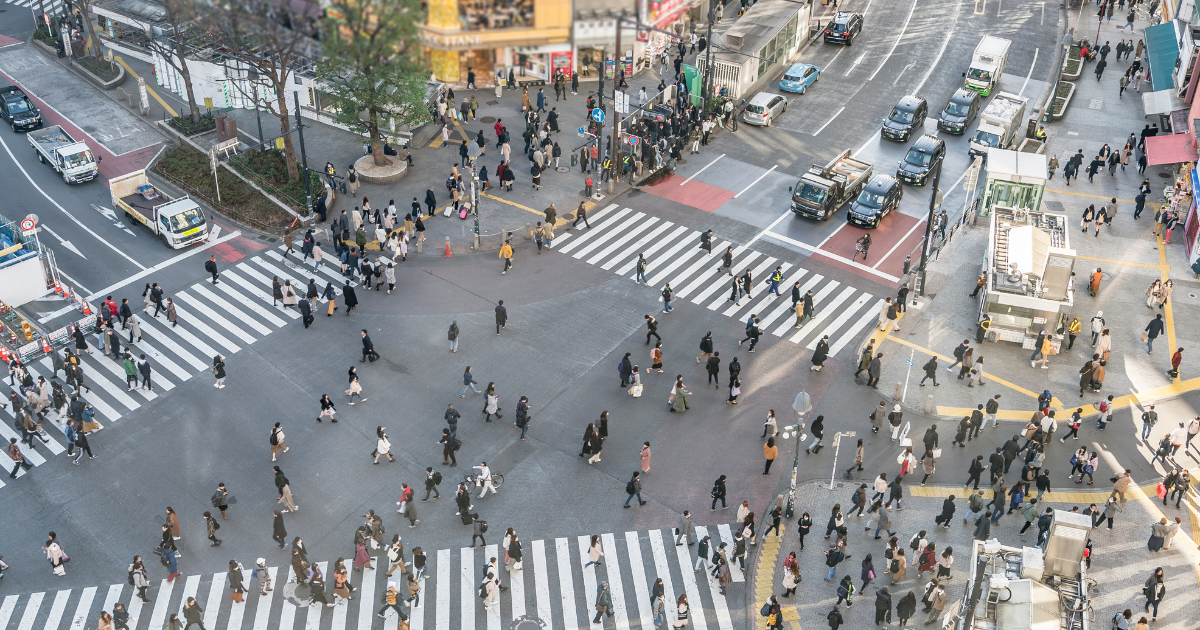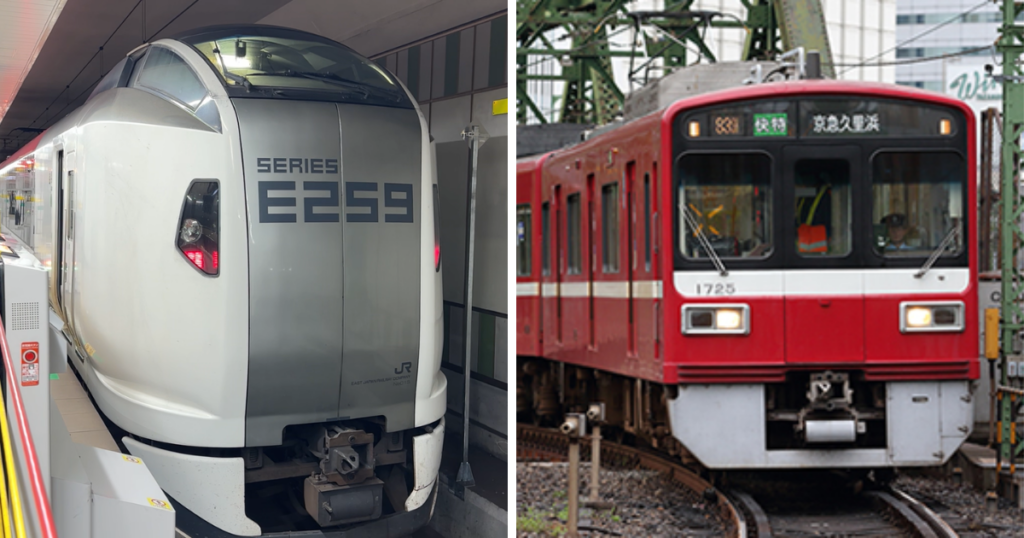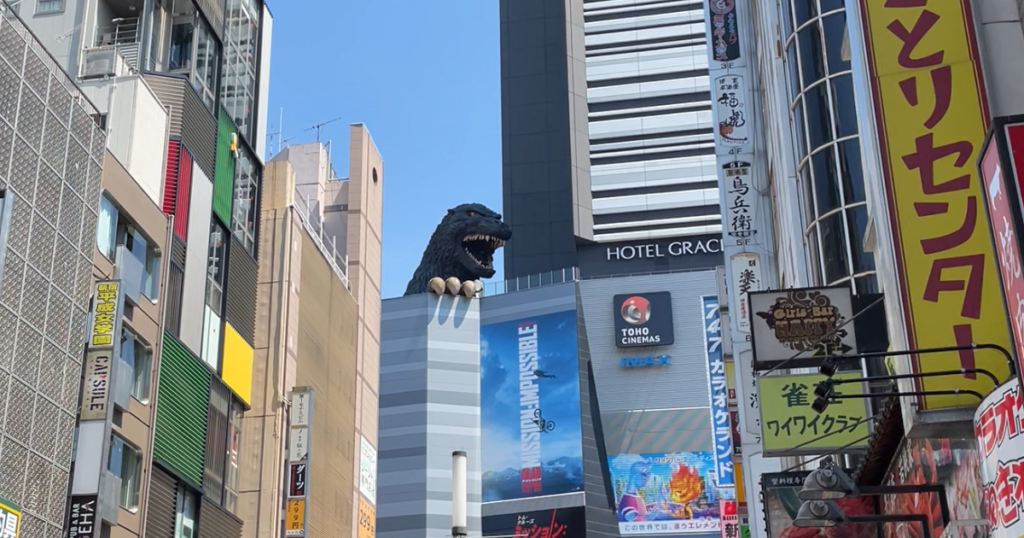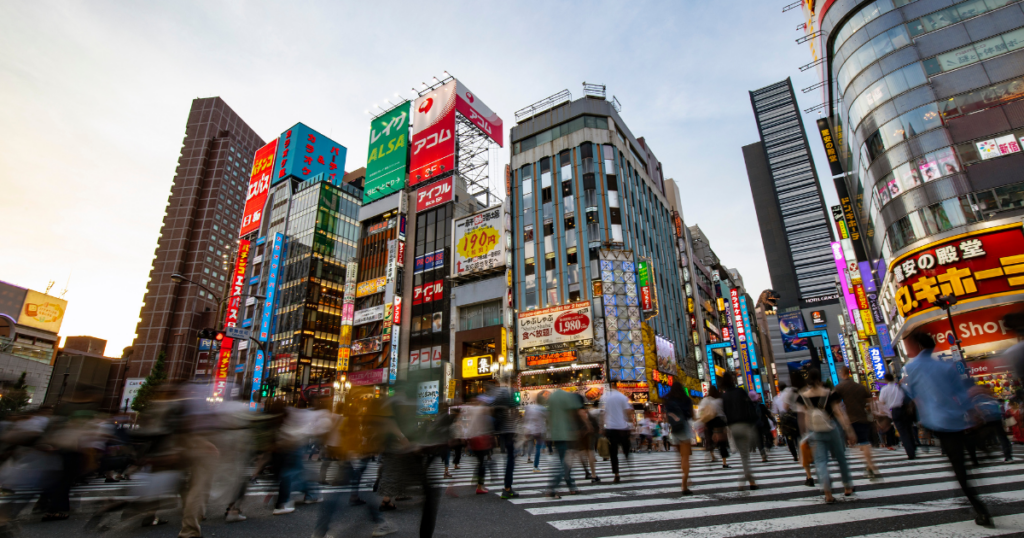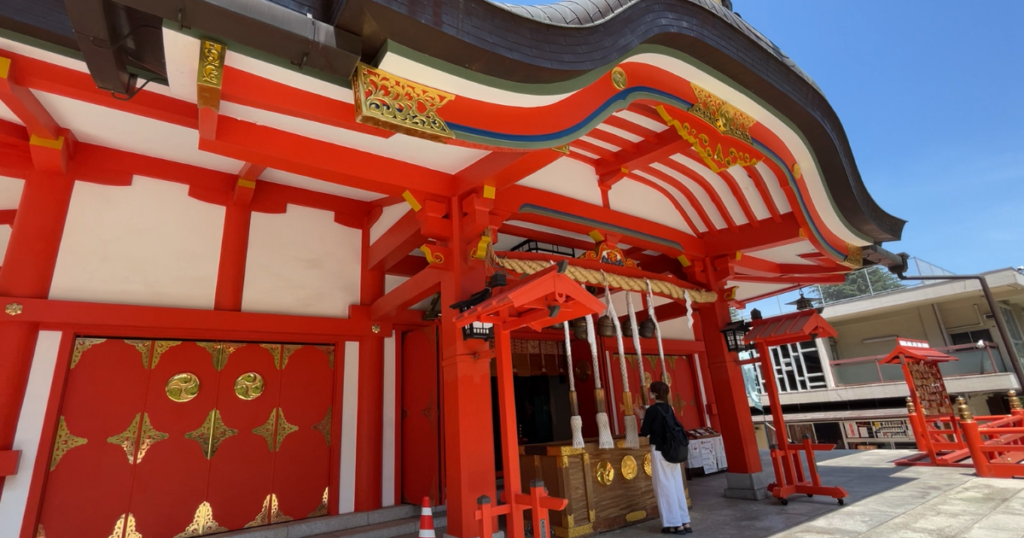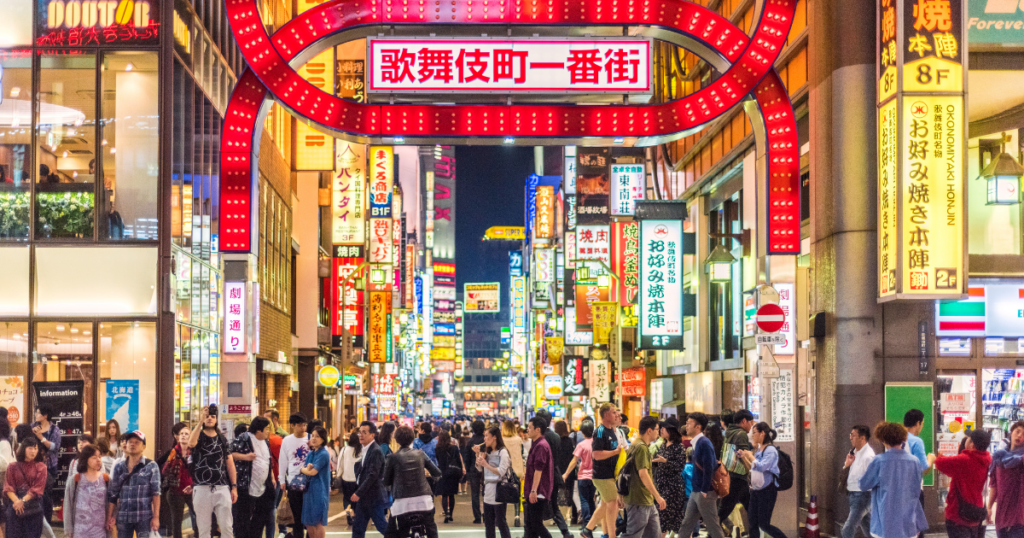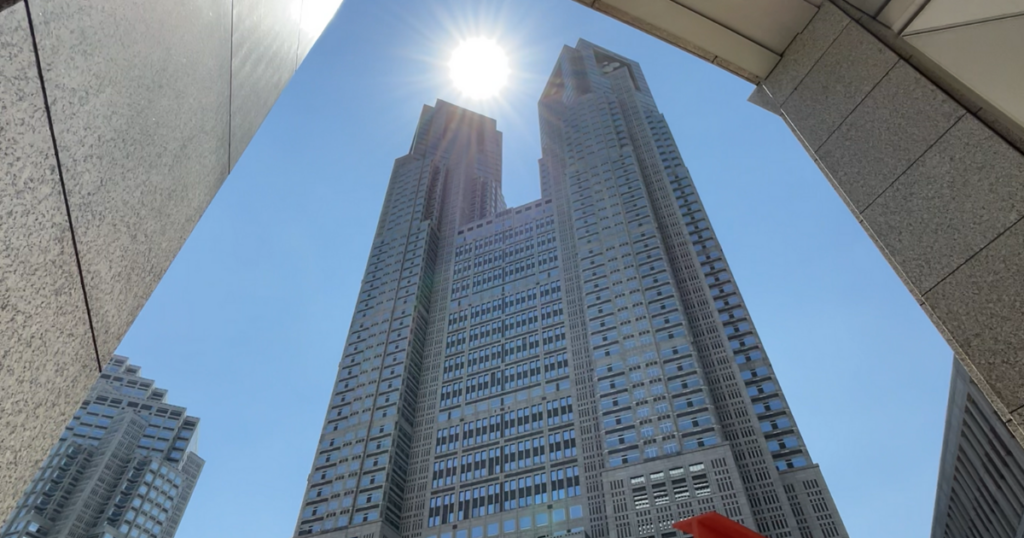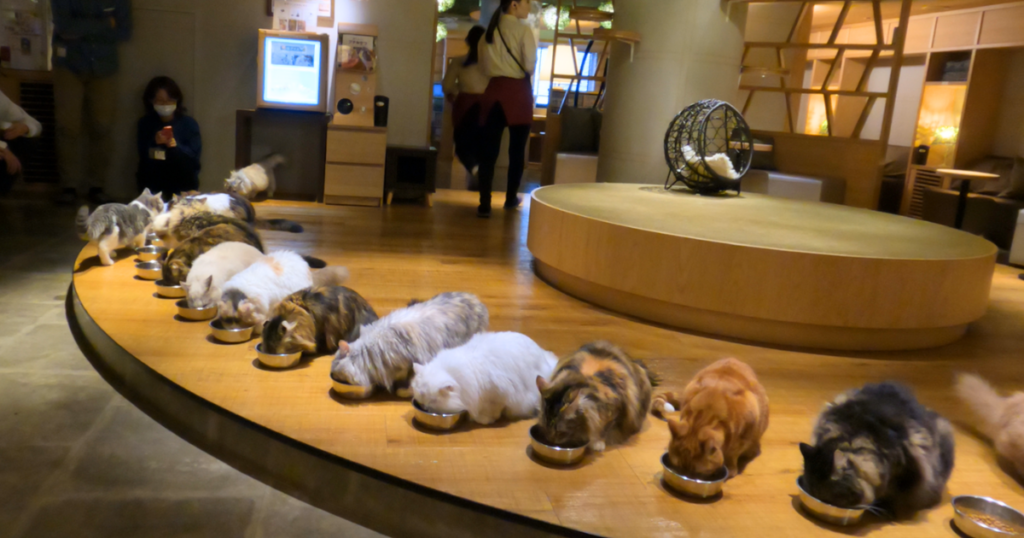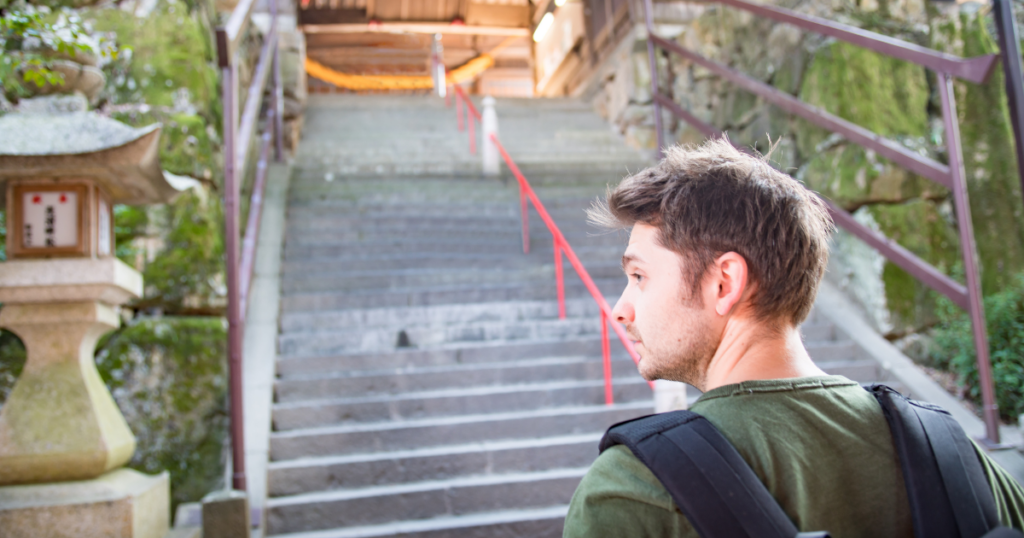The Shibuya Scramble Crossing is one of the busiest pedestrian intersections in the world, located in the Shibuya district of Tokyo, Japan.
It is renowned for its simultaneous multi-directional pedestrian flow and serves as a dynamic representation of Tokyo’s vibrant energy.
As both a functional traffic solution and a cultural icon, Shibuya Crossing attracts visitors from around the globe, offering a unique experience of urban dynamism.
About Shibuya Scramble Crossing
Origins of Scramble Crossing
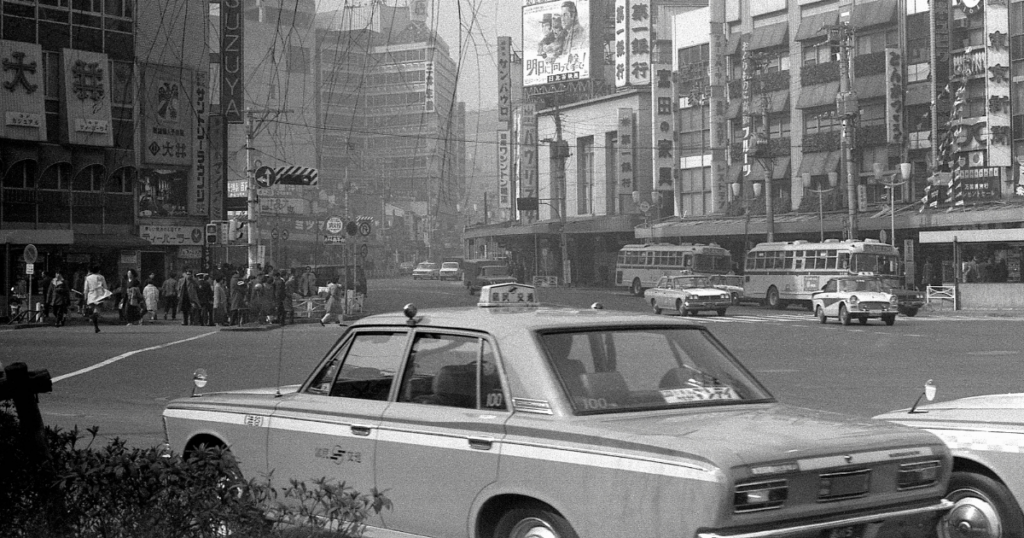
The Shibuya Scramble Crossing was established in the early 1970s to address the increasing pedestrian traffic in the Shibuya area, spurred by the growing popularity of Shibuya Station as a transit hub.
Inspired by earlier scramble crossings in North America, this innovative design halted all vehicle traffic at specific intervals, allowing pedestrians to cross in all directions, including diagonally.
Growth into a Global Symbol
In its early years, the crossing was primarily a functional space.
However, as Shibuya transformed into a hub for youth culture, fashion, and entertainment, the crossing became an integral part of Tokyo’s identity.
Its unique ability to manage high foot traffic while maintaining a chaotic yet organized aesthetic has made it a symbol of Tokyo’s modern urban lifestyle.
Layout of Scramble Crossing
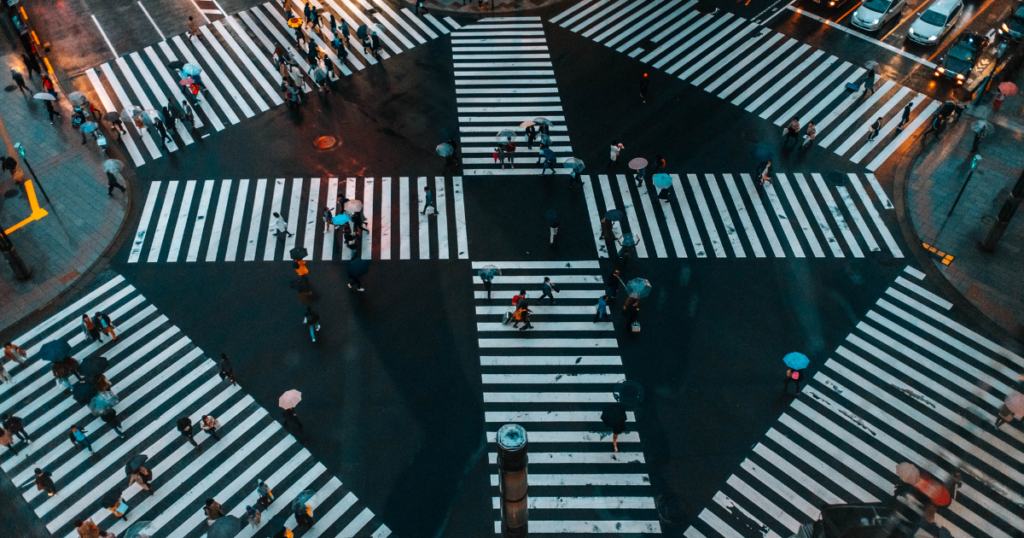
Traffic Management
The crossing is designed to handle the enormous volume of foot and vehicle traffic that passes through Shibuya daily.
Traffic lights halt vehicles from all directions, allowing pedestrians approximately 50 seconds to cross freely.
This system is repeated every two to three minutes, ensuring a seamless flow for both pedestrians and drivers.
- Peak pedestrian volume
Up to 3,000 people per crossing phase - Daily pedestrian count
Over 200,000 - Intersection dimensions
The five major crosswalks converge at the center, creating a space large enough for simultaneous crossings from all directions
Surrounding Infrastructure
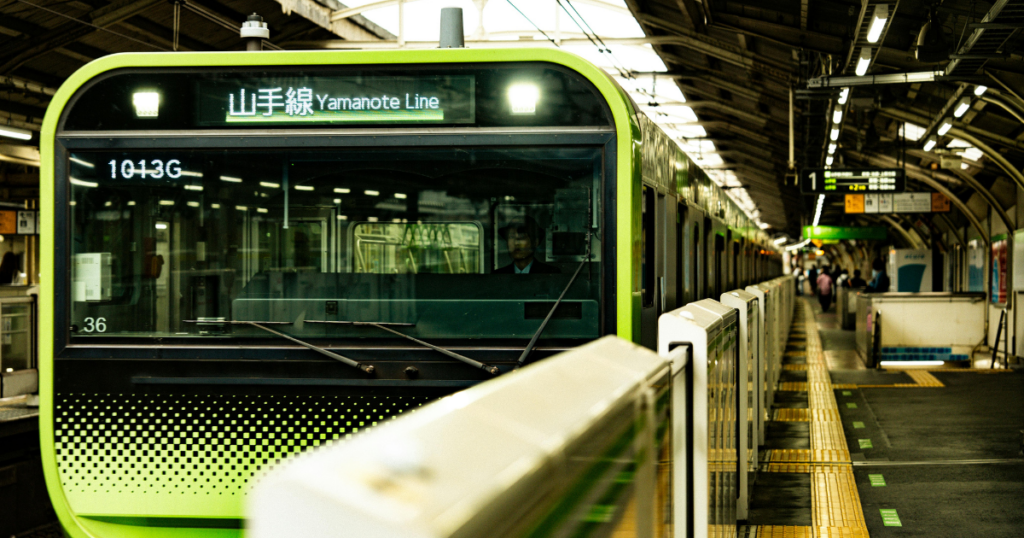
The crossing connects directly to Shibuya Station, one of Tokyo’s busiest transit hubs, servicing multiple train lines, including the JR Yamanote Line, Tokyo Metro, and Keio Inokashira Line.
It also links to Shibuya Center-Gai, a vibrant shopping and entertainment district.
Cultural and Global Significance
Media Appearances
The Shibuya Scramble Crossing has been featured in countless films, TV series, and advertisements.
Its vibrant energy and visually stunning chaos make it a popular backdrop for portraying Tokyo’s urban culture.
Some notable appearances include:
- Lost in Translation (2003): Highlighted the crossing as a cultural epicenter.
- The Fast and the Furious: Tokyo Drift (2006): Showcased the area’s high-energy atmosphere.
- Alice in Borderland (2020): Used the crossing as a dramatic set piece.
Global Influence
Shibuya Crossing has inspired similar pedestrian systems worldwide, including the Oxford Circus Scramble Crossing in London, which adopted elements of Shibuya’s design to manage its high foot traffic.
For visitors, crossing the intersection is both a surreal and exhilarating experience.
The sight of thousands of people moving in perfect harmony, against the backdrop of bright billboards and neon lights, creates an unforgettable impression.
Many tourists stop midway to take photographs or simply observe the scene.
Viewing Spots Around Shibuya Crossing
Best Locations for Observation
Shibuya Sky
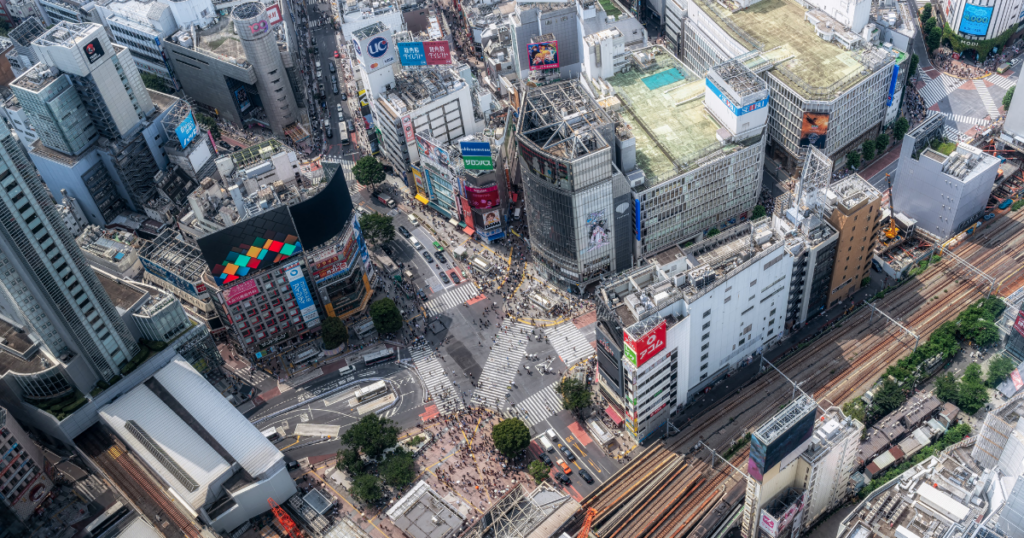
An observation deck atop Shibuya Scramble Square, offering panoramic views of the crossing and the surrounding cityscape.
Starbucks Shibuya Tsutaya
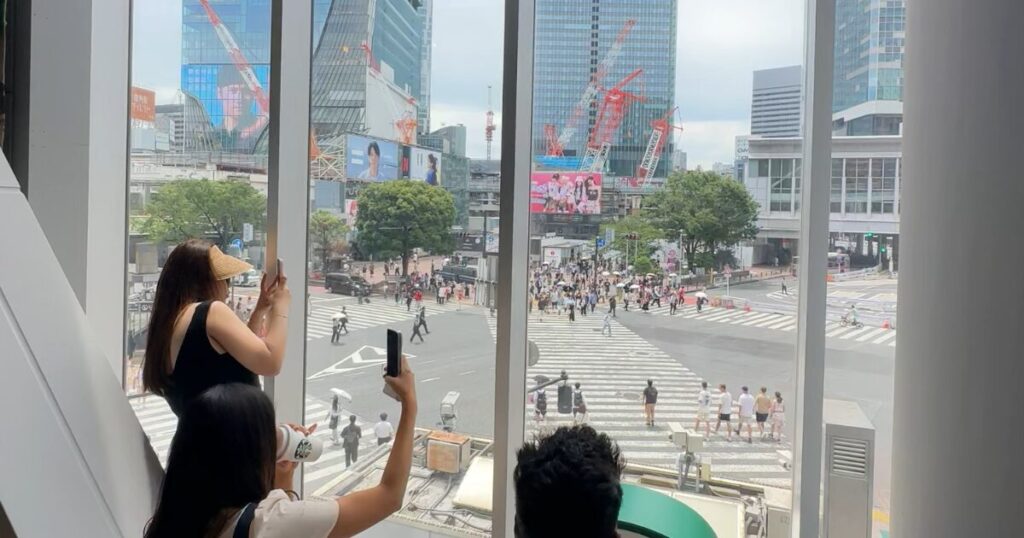
A popular café with large windows directly overlooking the crossing.
MAGNET by SHIBUYA109
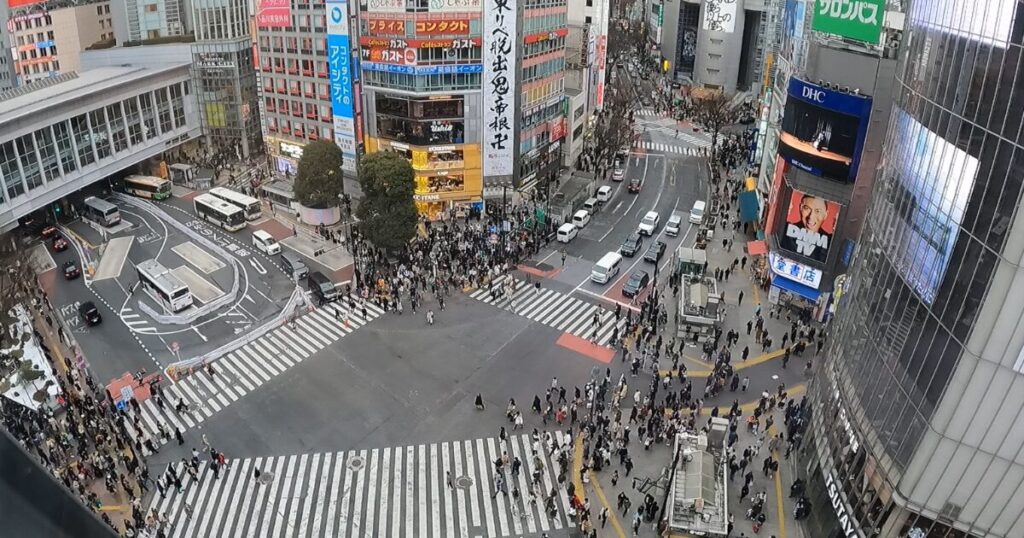
Features a rooftop viewing platform for a close-up perspective.
Nighttime vs. Daytime Views
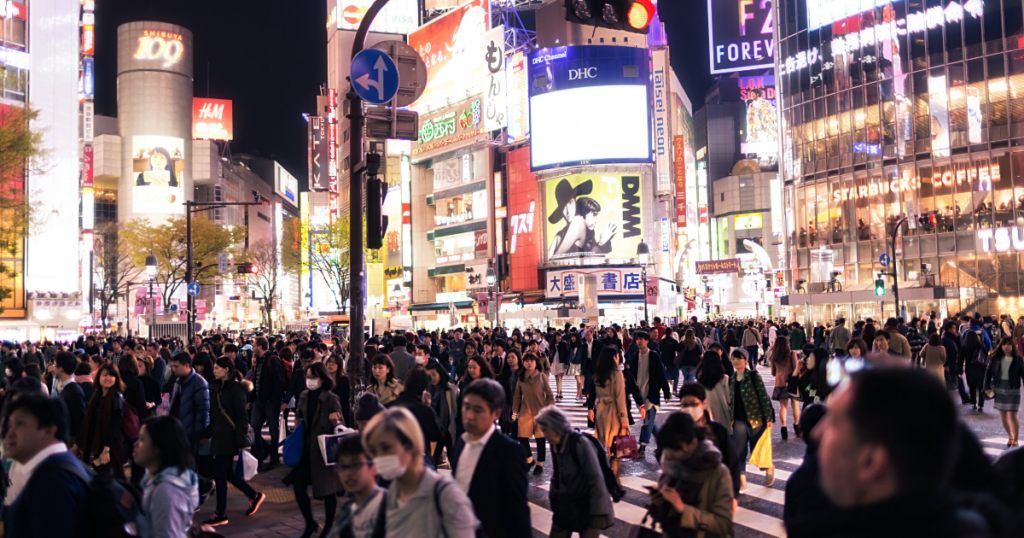
The Shibuya Scramble Crossing transforms dramatically between daytime and nighttime, offering distinct experiences that highlight different aspects of Tokyo’s urban energy.
Whether bathed in daylight or glowing under neon lights, the crossing provides an ever-changing backdrop for visitors and locals alike.
Visit in the late morning or early afternoon to avoid peak rush hours and enjoy a relaxed exploration of the surrounding shops and landmarks.
Arrive after 7 PM to experience the full effect of the illuminated billboards and enjoy Shibuya’s nightlife.
Both daytime and nighttime at Shibuya Scramble Crossing offer unique experiences, showcasing the multifaceted personality of Tokyo.
Whether you prefer the bustling daytime practicality or the magical nighttime glow, the crossing is an essential stop for anyone visiting the city.
The Future of Shibuya Scramble Crossing
Recent Developments
In recent years, the Shibuya district has undergone significant redevelopment to accommodate growing pedestrian and commercial activity.
Projects such as Shibuya Scramble Square and Shibuya Stream have added modern skyscrapers and public spaces, integrating seamlessly with the crossing.
Sustainability and Urban Planning
As Tokyo continues to modernize, urban planners are exploring ways to enhance the crossing’s functionality. Innovations include:
- Smart traffic systems
Using AI to optimize signal timing based on real-time pedestrian and vehicle flow data. - Accessibility improvements
Expanding pathways and adding facilities for individuals with mobility challenges.
Interesting Facts About Shibuya Crossing
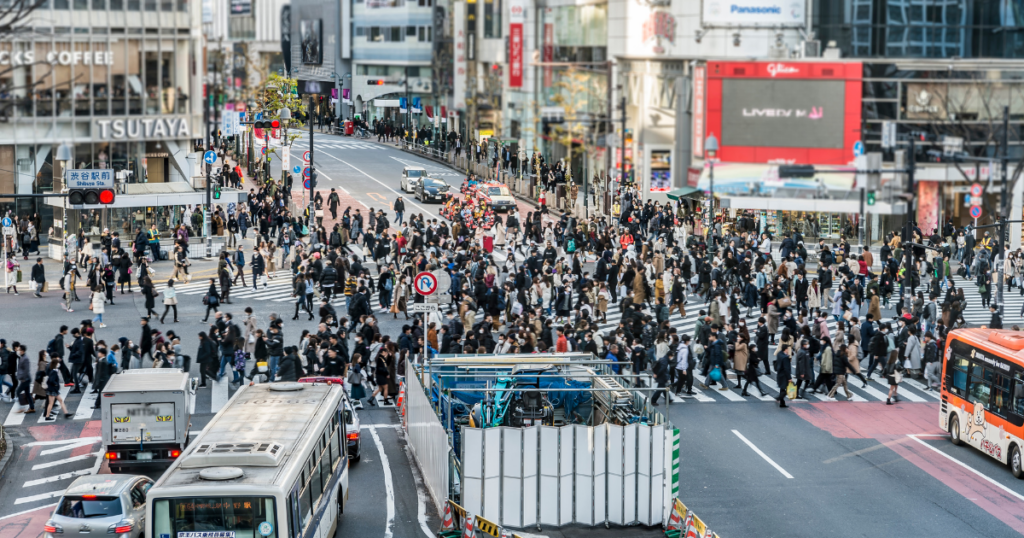
- Pedestrian Record
On the busiest days, such as New Year’s Eve or Halloween, pedestrian traffic at the crossing can exceed 500,000 people.
- Multilingual Information
Given its global popularity, nearby signage and announcements are often provided in multiple languages, including English, Chinese, and Korean.
- Economic Impact
The crossing is a critical driver of economic activity in the area, drawing shoppers and visitors to nearby stores, restaurants, and entertainment venues.
Conclusion
The Shibuya Scramble Crossing is much more than a traffic solution.
It is a living, breathing representation of Tokyo’s energy, culture, and modernity.
Whether you’re walking through it, photographing it, or simply watching from above, the crossing offers a one-of-a-kind urban experience that captures the essence of Tokyo like no other.

